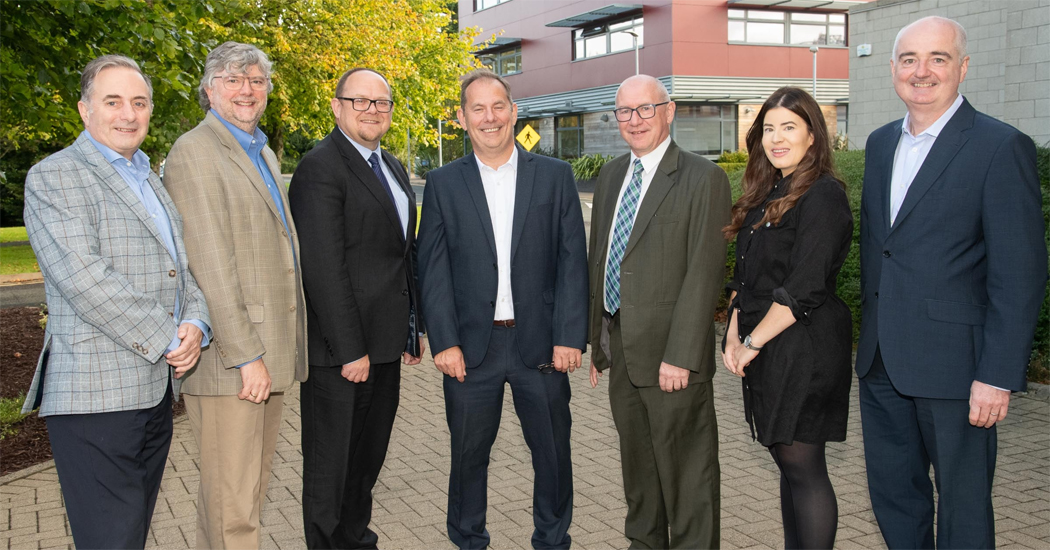Atlantic Technological University (ATU) has been awarded €8.46 million in funding to spearhead the creation of the Semiconductor Photonics Education and Research (SPEAR) Centre.
Led by ATU’s WiSAR Lab in Letterkenny, in partnership with Ulster University and the Tyndall National Institute at University College Cork, and anchored by industry partner Seagate Technology, the SPEAR Centre will position the region as a dynamic hub for semiconductor photonics, one of the world’s fastest growing and most strategically vital sectors.
The cross-border project is supported by PEACEPLUS, a programme overseen by the Special EU Programmes Body (SEUPB).
The funding is being delivered through the Innovation Challenge Fund, part of Theme 2: ‘Delivering Socio-Economic Regeneration and Transformation’ of the PEACEPLUS Programme.
Dr Orla Flynn, President of ATU, welcomed the announcement: “We are proud to lead this ambitious cross-border initiative that will place the North-West at the forefront of semiconductor photonics research and innovation. In today’s fast-changing global economy, this investment not only supports the region but also strengthens Ireland’s national response to the global semiconductor challenge.”
As semiconductors increasingly underpin digitalisation, artificial intelligence, and secure supply chains, global competition for technological leadership is intensifying.
The SPEAR Centre aligns with the EU Chips Act and Ireland’s Smart Specialisation Strategy, reflecting the urgent need to build sovereign capacity in advanced chip and photonics technologies.
Professor William Scanlon, CEO of Tyndall National Institute, noted: “The SPEAR Centre reflects a shared vision for advancing semiconductor and photonics capability across the island of Ireland. This investment will accelerate collaborative research and talent development in a sector that is vital to our technological and economic future.”
Professor Liam Maguire, Pro Vice-Chancellor Research at Ulster University, emphasised the Centre’s cross-border impact: “Ulster University is delighted to collaborate on this transformative initiative. The SPEAR Centre will serve as a catalyst for cross-border innovation, foster the development of critical skills, and empower SMEs to fully leverage the potential of emerging technologies.”
Dr Nick Timmons, Director of ATU’s WiSAR Lab and SPEAR Lead, highlighted the project’s potential: “This is a game-changing investment, not just in funding, but in what it means for the region’s future. The SPEAR Centre will drive a new wave of innovation, upskilling, and entrepreneurship in a strategically vital technology.
“By bringing together academic excellence, industry leaders, and local SMEs, we’re creating an ecosystem that’s globally connected and locally impactful.
“SPEAR will deliver cutting-edge research, high-value training, and real-world business support. Crucially, it will help embed advanced technology capabilities across the region, creating long-term opportunities on both sides of the border.”
By supporting SMEs, creating high-value research jobs, and fostering cross-border collaboration, the SPEAR Centre aims to boost regional resilience and innovation-driven growth while further advancing Ireland’s role in this critical global sector.
Gina McIntyre, Chief Executive of SEUPB, concluded: “The SPEAR Centre is a prime example of how PEACEPLUS can unlock potential through collaboration, innovation, and regional development.
“Economic development in any post-conflict region is essential for underpinning peace, by creating prosperity. The provision of support for SMEs, research and innovation in specific areas identified is a key focus within the PEACEPLUS Programme.
“By investing in collaborative innovation, we will see the development of strong and entrepreneurial, innovation-led ecosystems that drive sustainable growth, increased productivity and competitive advantage.”
Tags:







